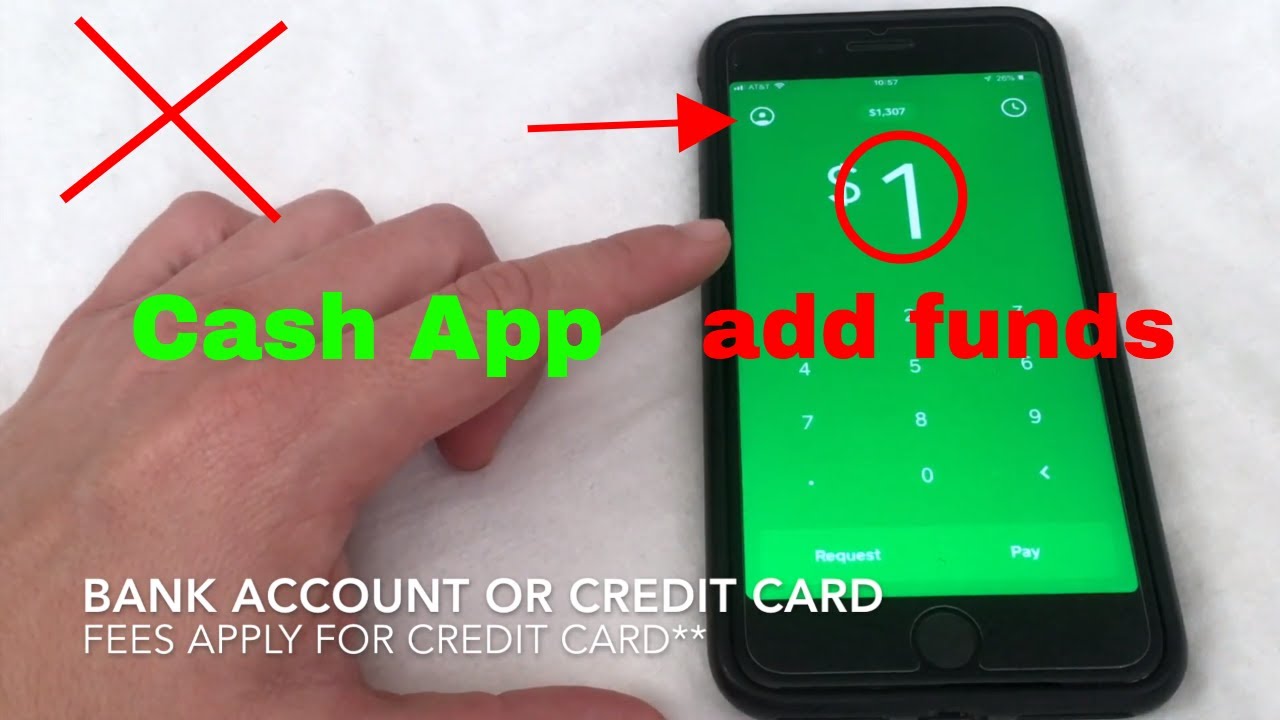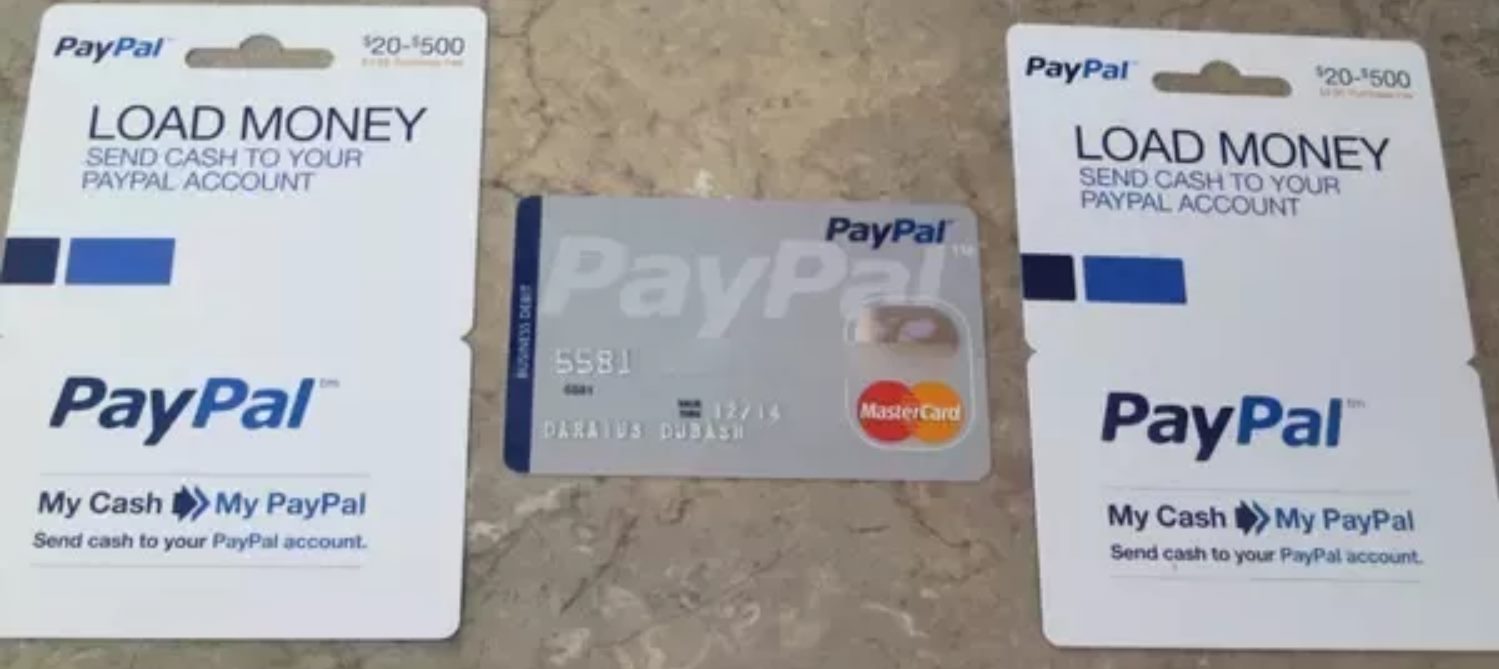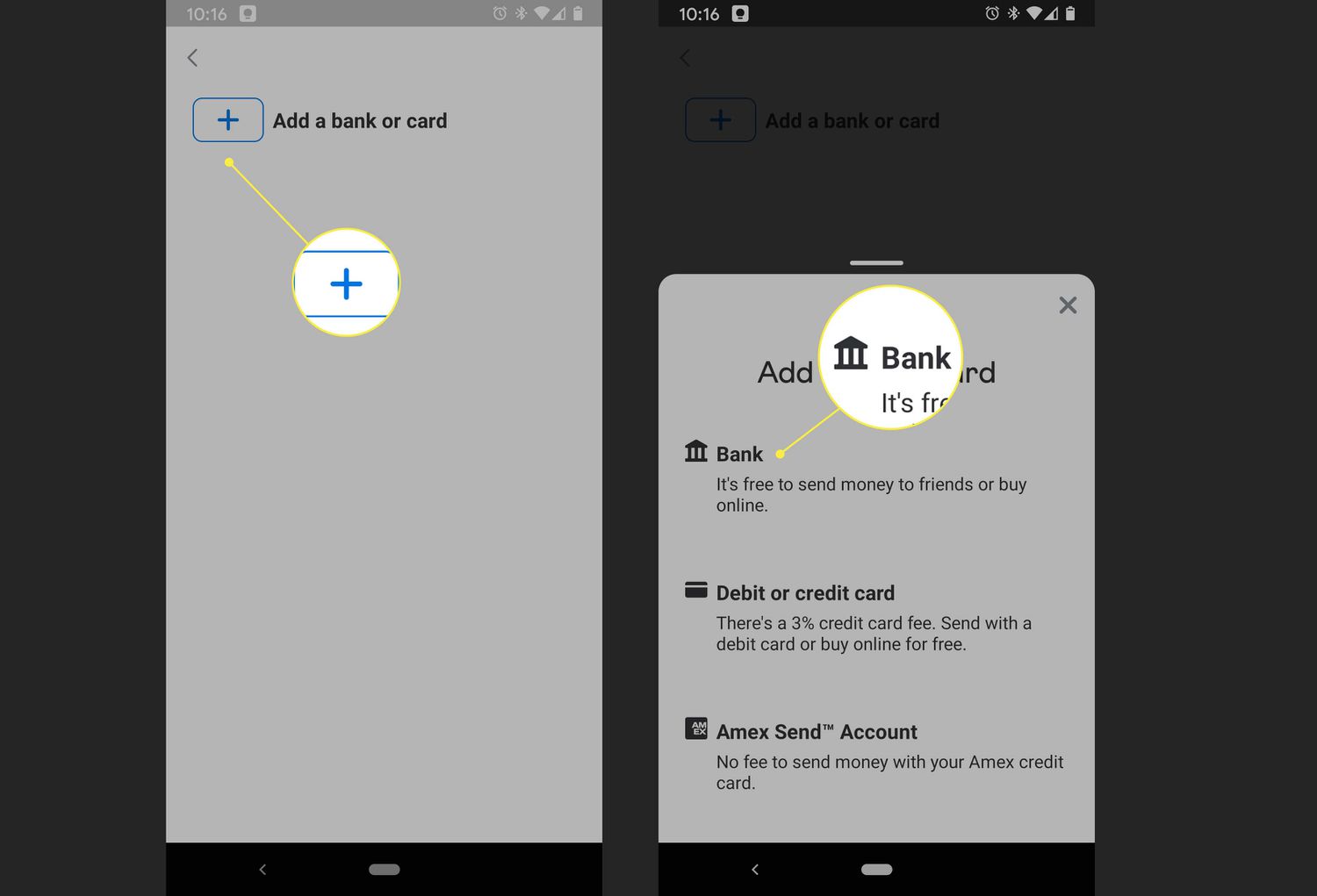Introduction
Welcome to the world of credit card money transfers – a convenient and secure way to move funds from one account to another. Whether you are looking to pay off existing debts, send money to a loved one, or simply transfer funds between your own accounts, using a credit card for money transfer can offer numerous benefits.
In this article, we will delve into the ins and outs of credit card money transfers. We will explore the advantages of using a credit card for this purpose, guide you through the process of setting up a credit card for money transfer, and provide you with helpful tips to ensure a successful transaction. We will also discuss some potential risks and considerations that you should be aware of.
With the right knowledge and strategy, utilizing your credit card for money transfers can save you time, money, and worry. Whether you are a seasoned credit card user or new to the world of plastic, this guide will equip you with the tools and information necessary to make the most of this convenient financial tool.
Understanding Credit Card Money Transfer
A credit card money transfer, also referred to as a balance transfer or funds transfer, is a process that allows you to move money from your credit card to another account. This can be a bank account, another credit card, or even a loan account. It essentially converts your credit card’s available credit into cash or credit for another account.
One of the key features of a credit card money transfer is that it is often accompanied by promotional offers, such as low or zero-interest rates for a limited period. These offers make it an attractive option for individuals looking to consolidate debt or make a large purchase without incurring high interest charges.
It’s important to note that a credit card money transfer is different from a cash advance. With a cash advance, you are withdrawing cash from your credit card, typically incurring high interest rates and additional fees right away. In contrast, a credit card money transfer involves transferring funds electronically to another account, allowing you to take advantage of promotional offers and potentially save on interest charges.
To initiate a credit card money transfer, you will typically need to provide the necessary details, such as the account number and payment amount, either online or through your credit card issuer’s customer service. The funds are then transferred electronically to the designated account.
It’s important to review the terms and conditions of your credit card agreement to understand any fees, interest rates, or promotional periods associated with the money transfer. Additionally, ensure that the receiving account accepts credit card transfers, as not all accounts or financial institutions may allow this type of transaction.
Now that we have a basic understanding of credit card money transfers, let’s explore the benefits of using a credit card for money transfer in the next section.
Benefits of Using Credit Card for Money Transfer
Using a credit card for money transfer offers several advantages that can make it an appealing option for managing your finances. Let’s take a closer look at some of the key benefits:
- Convenience: Credit card money transfers provide a convenient way to move funds without the need for physical cash or checks. You can initiate the transfer online or contact your credit card issuer’s customer service, saving you time and effort.
- Potential savings on interest: Many credit card issuers offer promotional periods with low or zero-interest rates on money transfers. By taking advantage of such offers, you can save money on interest charges, especially if you are consolidating higher-interest debt from other sources.
- Consolidating debt: If you have multiple outstanding debts, using a credit card money transfer allows you to consolidate them into a single account. This can simplify your budgeting efforts and potentially lower your overall interest charges.
- Flexibility: Credit card money transfers offer flexibility in terms of where you can transfer the funds. You can send money to your bank account, pay off another credit card balance, or even move funds to a loan account. It gives you the freedom to manage your finances according to your specific needs.
- Rewards and benefits: Some credit cards offer rewards programs or cashback incentives for money transfers. By using your credit card for transfers, you can earn rewards points or cashback, adding an extra perk to your financial transactions.
These benefits make credit card money transfers an attractive option for individuals looking to optimize their financial management and take advantage of potential savings. However, it’s important to consider the specific terms and conditions of your credit card agreement, including any fees or limitations associated with money transfers.
Now that we understand the benefits, let’s delve into the process of setting up a credit card for money transfer.
How to Set Up a Credit Card for Money Transfer
Setting up your credit card for money transfers requires a few simple steps. Here’s a step-by-step guide to help you get started:
- Check your credit card agreement: Begin by reviewing your credit card agreement or contact your credit card issuer’s customer service to understand if your card offers money transfer options. Take note of any fees, promotional periods, and interest rates associated with money transfers.
- Confirm receiving account compatibility: Ensure that the account you plan to transfer funds to accepts credit card money transfers. This can be a bank account, another credit card, or a loan account. Check with the receiving institution to confirm their acceptance and any specific requirements.
- Provide necessary details: Once you have confirmed the compatibility, gather the necessary details for the money transfer. This typically includes the account number, payment amount, and any additional information required by the receiving institution.
- Initiate the transfer: You can initiate the transfer either online or by contacting your credit card issuer’s customer service. Follow the provided instructions and enter the required information accurately. Double-check all the details before finalizing the transfer.
- Monitor the transfer: Once the transfer is initiated, it’s important to monitor the process closely. Keep track of the timeline provided by your credit card issuer, and ensure that the funds are successfully transferred to the designated account.
- Review and confirm: After the transfer is complete, take the time to review your statements and confirm that the funds have been deducted from your credit card balance and credited to the receiving account as expected.
Remember, every credit card issuer may have slight variations in the process, so it’s important to follow the specific instructions provided by your credit card issuer. By following these steps, you can easily set up your credit card for money transfers and enjoy the convenience and potential savings it offers.
Next, we will discuss how to choose the right credit card for money transfer.
Choosing the Right Credit Card for Money Transfer
When it comes to choosing the right credit card for money transfer, it’s essential to consider several factors. Here are some key points to keep in mind:
- Low or zero-interest promotional offers: Look for credit cards that offer attractive promotional APR (Annual Percentage Rate) periods for money transfers. These offers can provide substantial savings on interest charges, especially if you are planning to consolidate higher-interest debts.
- Balance transfer fees: Take note of any balance transfer fees associated with the credit card. While some cards offer zero or low balance transfer fees during promotional periods, others may charge a percentage of the transferred amount. Compare and consider these fees when choosing a credit card for money transfer.
- Credit limit: Check the credit limit on the credit card you are considering for money transfers. Ensure that it is sufficient to accommodate the amount you plan to transfer. Transferring funds that exceed your credit limit may lead to additional fees or declined transactions.
- Long-term interest rates: While promotional offers may provide attractive interest rates for a limited period, it’s important to also consider the long-term interest rates associated with the credit card. If you anticipate carrying a balance beyond the promotional period, make sure the regular interest rates are competitive and manageable for you.
- Rewards programs and perks: If you value rewards or perks, consider credit cards that offer rewards programs or cashback incentives for money transfers. These additional benefits can enhance your overall financial experience.
It’s important to compare and evaluate different credit card options before making a final decision. Consider factors such as the duration of the promotional offer, the balance transfer fees, the regular interest rates, and any additional terms and conditions that may impact your overall financial strategy.
Additionally, always read the fine print and understand the credit card agreement thoroughly. Pay attention to any potential pitfalls, such as penalties for late payments or missed payments, as these can impact your overall experience with the credit card for money transfers.
By carefully weighing these factors and choosing the right credit card, you can maximize the benefits of credit card money transfers and ensure a smooth financial journey.
Next, we will walk you through the steps to perform a credit card money transfer.
Steps to Perform a Credit Card Money Transfer
Performing a credit card money transfer involves a series of simple steps. Here’s a straightforward guide to help you navigate through the process:
- Research and choose the receiving account: Determine the account to which you want to transfer the funds. It can be a bank account, another credit card, or a loan account. Ensure that the receiving account is compatible with credit card money transfers.
- Gather the necessary information: Collect all the required details for the money transfer, such as the account number, payment amount, and any additional information requested by the receiving account. Double-check that the information is accurate and correct.
- Contact your credit card issuer: Reach out to your credit card issuer through customer service or access your online account. Navigate to the money transfer section or speak with a representative to initiate the transfer process.
- Provide the requested details: Follow the instructions provided by your credit card issuer and enter the required information for the money transfer. Input the account details of the receiving account, including the account number and the payment amount.
- Review and confirm: Carefully review all the entered information before finalizing the money transfer. Verify that the details are accurate to ensure a successful transaction.
- Monitor the transfer: Keep an eye on the transfer status. Track the timeline provided by your credit card issuer to determine when the funds are expected to be transferred to the receiving account.
- Receive confirmation: Once the transfer is complete, you should receive confirmation from your credit card issuer. Additionally, review your credit card statement to ensure that the funds have been deducted from your credit card balance.
- Confirm the receiving account: Check the receiving account to verify that the funds have been successfully deposited. This step ensures that the money transfer was accurately executed.
It’s vital to follow these steps diligently to ensure a smooth and successful credit card money transfer. Keep in mind that specific details and procedures may vary based on your credit card issuer’s policies and guidelines.
By following these steps, you can confidently transfer funds using your credit card and enjoy the convenience and potential savings it offers. Now that you know how to perform a credit card money transfer, let’s move on to some essential tips for a successful transaction.
Tips for Successful Credit Card Money Transfer
Performing a successful credit card money transfer requires careful planning and attention to detail. Here are some valuable tips to ensure a smooth and efficient transaction:
- Understand the terms and conditions: Familiarize yourself with the terms and conditions of your credit card agreement. Pay attention to any fees, promotional periods, and interest rates associated with money transfers.
- Choose the right timing: Consider the timing of your money transfer. If you’re taking advantage of a promotional offer, make sure you initiate the transfer within the specified timeframe to benefit from the low or zero-interest rate.
- Double-check the details: Ensure that you have entered all the necessary information accurately, including the account number and payment amount. Even a minor error could lead to complications or delays in the transfer process.
- Monitor your credit limit: Keep track of your credit limit to ensure that it can accommodate the transfer amount. Transferring funds that exceed your limit may result in additional fees or a declined transaction.
- Safeguard your account information: Protect your credit card and account details to prevent unauthorized access or fraudulent activities. Be cautious when sharing your information and make sure to only provide it on secure platforms.
- Keep track of transaction fees: Be aware of any fees associated with credit card money transfers, such as balance transfer fees. Factor these fees into your overall financial planning and consider whether the potential benefits outweigh the costs.
- Pay attention to repayment terms: If you’re using a credit card money transfer to consolidate debt, create a repayment plan to ensure that you can pay off the transferred amount within the promotional period or before the regular interest rates apply.
- Review your statements: Regularly review your credit card statements to ensure that the money transfer has been accurately processed and that the funds have been deducted from your credit card balance as expected.
- Communicate with your credit card issuer: If you encounter any issues or have questions regarding your money transfer, don’t hesitate to reach out to your credit card issuer’s customer service. They can provide guidance and assistance to help resolve any concerns.
By following these tips, you can maximize the benefits of credit card money transfers and minimize any potential complications. Stay informed, be vigilant, and communicate effectively to ensure a successful credit card money transfer.
In the next section, we will discuss some potential risks and considerations associated with credit card money transfers.
Potential Risks and Considerations
While credit card money transfers can offer convenience and potential savings, it’s important to be aware of the potential risks and considerations involved. Here are some key points to keep in mind:
- Interest rates: Once the promotional period ends, the interest rates on credit card money transfers can increase significantly. Make sure to understand the regular interest rates associated with the credit card and factor them into your repayment plan.
- Additional fees: Some credit card issuers may charge balance transfer fees or other transaction fees for money transfers. These fees can add to the overall cost of the transfer, so it’s important to consider them when assessing the benefits of using a credit card for money transfer.
- Impact on credit score: Transferring funds from a credit card to another account can impact your credit score. It may affect your credit utilization ratio and the average age of your credit accounts. Be mindful of these potential effects and assess the long-term impact on your creditworthiness.
- Missed payments: Late payments or missed payments can have severe consequences when utilizing a credit card for money transfers. Not only can it lead to additional fees and penalties, but it may also result in a loss of promotional offers, triggering higher interest rates on the transferred amount.
- Repayment challenges: If you’re consolidating debt through a credit card money transfer, it’s crucial to have a solid repayment plan in place. Failing to repay the transferred amount within the promotional period or before the regular interest rates apply can result in increased debt and financial strain.
- Lower credit limits: After a credit card money transfer, your available credit limit may decrease. This reduction can impact your ability to make further purchases or retain emergency funds on the credit card until you repay the transferred amount.
- Receiving account limitations: Not all financial institutions or accounts accept credit card money transfers. Ensure that the receiving account supports this type of transaction and be aware of any specific requirements or limitations that may apply.
- Security concerns: As with any financial transaction, there is a risk of fraud or unauthorized access to your credit card or account information. Take precautionary measures to safeguard your personal and financial details to minimize the risk of fraudulent activities.
Considering these risks and factors can help you make informed decisions when using a credit card for money transfers. It’s important to weigh the potential benefits against the risks and assess your financial situation and needs before proceeding with a transfer.
Now that we have explored the potential risks and considerations, let’s conclude the article with a recap of the key points discussed.
Conclusion
Using a credit card for money transfer offers a convenient and efficient way to manage your finances. Whether you’re looking to consolidate debt, move funds between accounts, or make a payment, credit card money transfers can provide benefits such as potential savings on interest and flexibility in managing your funds.
Throughout this article, we explored the various aspects of credit card money transfers. We discussed how to set up a credit card for money transfer, the importance of choosing the right credit card, and the steps to perform a successful transfer. We also provided tips to ensure a smooth transaction and highlighted potential risks and considerations.
However, it’s essential to remember that credit card money transfers come with certain risks, such as varying interest rates, potential fees, and the impact on your credit score. It’s crucial to assess your financial situation, devise a repayment plan, and stay vigilant to avoid any pitfalls.
By understanding the intricacies of credit card money transfers and following the recommended guidelines, you can make informed decisions and maximize the benefits while mitigating the risks. Always review the terms and conditions provided by your credit card issuer, monitor your transactions, and maintain open communication with your financial institution.
Now that you have a comprehensive understanding of how to use a credit card for money transfer, take the necessary steps to set up your credit card, choose the right time to initiate a transfer, and ensure responsible and timely repayment. With proper planning and execution, credit card money transfers can be a valuable tool in achieving your financial goals.

























